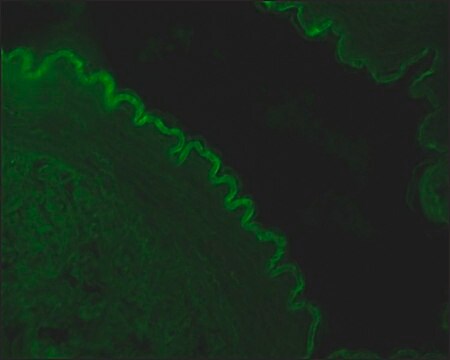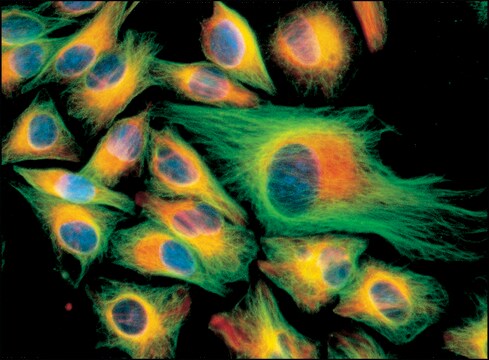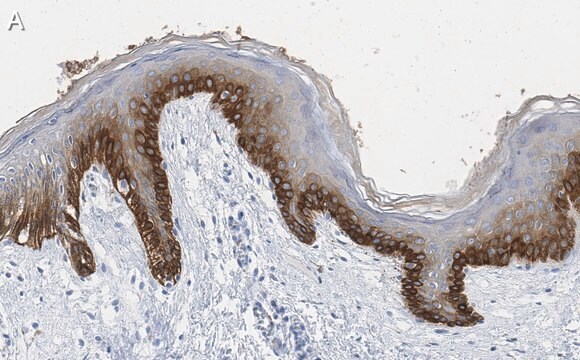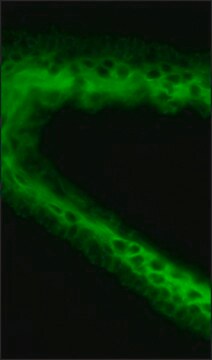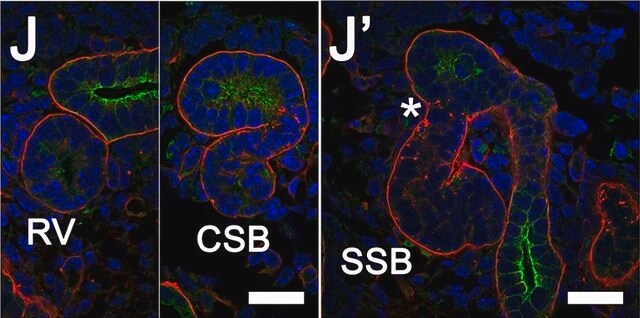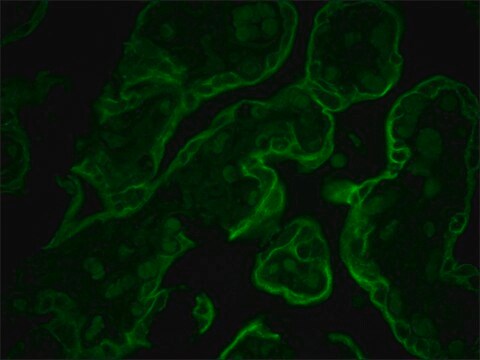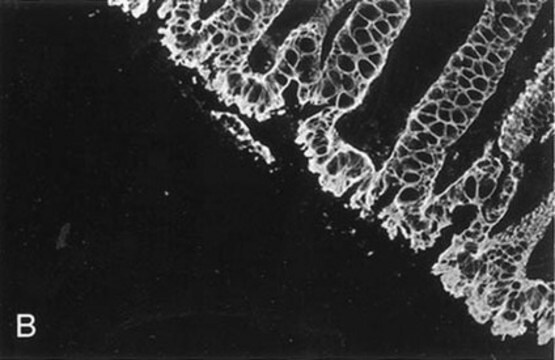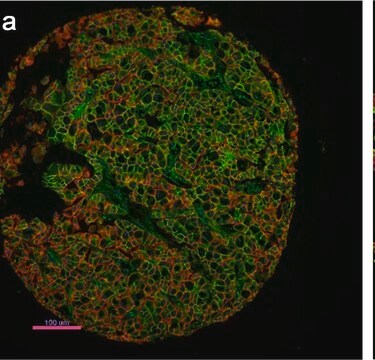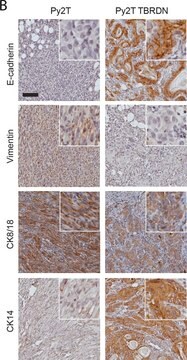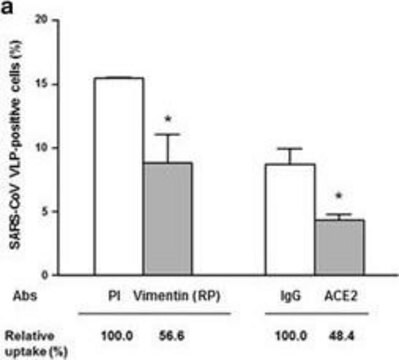C2931
Monoclonal Anti-Cytokeratin, pan antibody produced in mouse
clone C-11, ascites fluid
Synonym(s):
Monoclonal Anti-Pan Cytokeratin
About This Item
Recommended Products
biological source
mouse
Quality Level
conjugate
unconjugated
antibody form
ascites fluid
antibody product type
primary antibodies
clone
C-11, monoclonal
contains
15 mM sodium azide
species reactivity
bovine, mouse, frog, human, kangaroo rat, rat
technique(s)
immunohistochemistry (formalin-fixed, paraffin-embedded sections): suitable using protease-digested sections of human or animal tissues
immunohistochemistry (frozen sections): suitable
indirect immunofluorescence: 1:400 using protease-digested, formalin-fixed, paraffin-embedded sections of human or animal tissues
western blot: suitable
isotype
IgG1
shipped in
dry ice
storage temp.
−20°C
target post-translational modification
unmodified
Gene Information
bovine ... Krt1(100301161)
human ... KRT1(3848) , KRT13(3858) , KRT13(3858) , KRT18(3875) , KRT18(3875) , KRT4(3851) , KRT4(3851) , KRT5(3852) , KRT5(3852) , KRT6A(3868) , KRT6A(3868) , KRT6B(3854) , KRT6B(3854) , KRT8(3856) , KRT8(3856)
mouse ... Krt1(16678) , Krt10(16661) , Krt10(16661) , Krt13(16663) , Krt13(16663) , Krt18(16668) , Krt18(16668) , Krt4(16682) , Krt4(16682) , Krt5(110308) , Krt5(110308) , Krt6a(16687) , Krt6a(16687) , Krt6b(16688) , Krt6b(16688) , Krt8(16691) , Krt8(16691)
rat ... Krt1(300250) , Krt1-18(706059) , Krt1-18(706059) , Krt10(450225) , Krt10(450225) , Krt2-5(369017) , Krt2-5(369017) , Krt2-8(25626) , Krt2-8(25626)
Looking for similar products? Visit Product Comparison Guide
General description
Immunogen
Application
Biochem/physiol Actions
Disclaimer
Not finding the right product?
Try our Product Selector Tool.
recommended
Storage Class Code
10 - Combustible liquids
WGK
nwg
Flash Point(F)
Not applicable
Flash Point(C)
Not applicable
Choose from one of the most recent versions:
Already Own This Product?
Find documentation for the products that you have recently purchased in the Document Library.
Customers Also Viewed
Our team of scientists has experience in all areas of research including Life Science, Material Science, Chemical Synthesis, Chromatography, Analytical and many others.
Contact Technical Service

